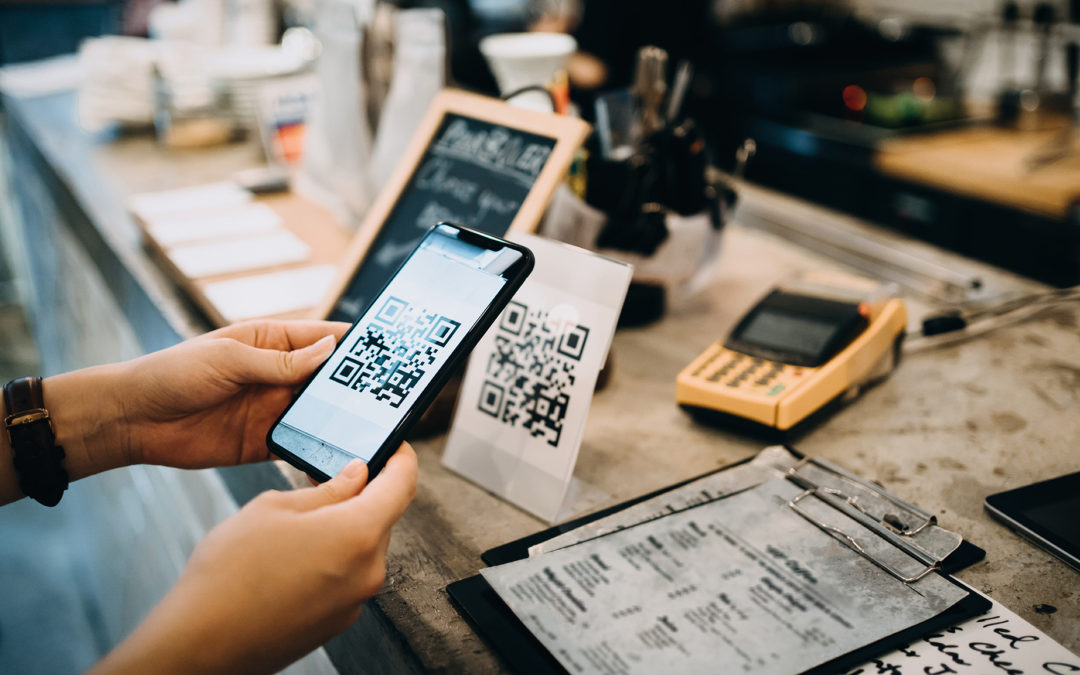The staffing shortage has become one of the biggest pain points for restaurants today. While not every restaurant owner has adjusted to industry changes in the same way, most agree that it has never been more important to adapt at a moment’s notice. Automation technology is quickly becoming an essential tool to help combat existing labor challenges.
87% of respondents, from our latest Hospitality State of the Industry Report agree that new technology adoption over the last two years has been critical for their business’ survival. Tools like online and QR code ordering are still key to battling staffing shortages. Fortunately, they also provide a better customer experience overall.
What is QR code ordering?
QR codes have been around in different industries for over a decade, but recently they’ve made a splash in hospitality as a way to provide contactless solutions, digitize menus, and alleviate staff during a sector-wide shortage. Restaurants use QR codes by placing them on tables or counters, allowing customers to access the menu virtually with their smartphone camera.
What’s the difference between online ordering and QR code ordering?
QR code ordering refers specifically to the use of a physical QR code as a way to display a menu digitally and place an order. QR codes are also mostly used when customers are dining at the restaurant, as codes are placed on the table for easier access and viewing. Online ordering refers to the broader ordering process that lets customers take orders via a website or app using a phone, computer, tablet or any device with an internet connection. Online ordering can be used when customers are dining on premise and off. For example, a customer can place an order on the restaurant’s website using their phone and pick it up for takeout.
Using online ordering to combat limited staff and serve more customers
During a staffing shortage, restaurants need to find solutions that keep them serving and delivering a great quality experience, regardless of the number of front-of-house employees they have at any given time. Using online and QR code ordering connected to a point of sale system automates several components of the order taking process. Customers can easily look at menus and place orders using their phones without waiting, freeing up staff to take care of other customers, handle takeout and delivery orders, clean up tables or take on any other urgent task. This has the added benefit of reducing menu printing and cleaning costs, and lets management make menu changes on the fly.
Cutting out third-party fees
One of the main benefits of incorporating an in-house online ordering system with a restaurant point of sale system is cutting out third-party fees. While partnering with third-party service providers can give restaurants access to new audiences, their fees can be high and can quickly eat into a restaurant’s profits. With staffing competition at an all-time high, reducing costs allows restaurants to carve out more budget to increase wages or benefits to prospective employees.
Improving the customer experience
By reducing high-touch labor and processes, staff have more time to cater to a customer’s dining experience. Online ordering also reduces errors in the ordering process, as customers are placing the orders directly themselves. Orders get to the kitchen exactly as the customer inputs it. With ordering automation technology, staff have more time to upsell customers, and make sure food arrives on time.
Offering contactless payments
Taking payments should never be a lengthy or complex process for customers. Online ordering lets customers pay for their entire order online, without even having to wait for staff or a payment terminal. This means less time running around and more time ensuring guests are enjoying their experience. It also reduces wait times for guests at the end of their meal, meaning more turnover for restaurants.
Restaurant automation is here to stay…
Finding new ways to automate manual processes is proving essential for restaurants working with limited staff or facing other service disrupting challenges. Adding new technologies like online ordering and QR code ordering will lend a much-needed helping hand, and it will also give staff the time they need for tasks that require that unique human component that makes a restaurant’s customer service great.
Leads the hospitality line of business at lightspeed, the one-stop commerce platform for merchants around the world to simplify, scale and create exceptional customer experiences. With over 10 years operating in the SaaS and payments fields, Peter has extensive experience bringing new products to the hospitality market as well as building and leading teams within high growth organizations. Dedicated to enhancing communities with independent restaurants, Peter has played key roles in growing Lightspeed from startup to scale and helping restaurants leverage technology to expand their margins and deliver excellent guest experiences.


 MEWS is a full service web development Internet marketing company and technology integrator founded in 2003, by leading industry consultants with previous technology experience.MEWS is an Internet services and solutions company with interests in website development – Mobile applications– domain name registrations - web hosting.
MEWS is a full service web development Internet marketing company and technology integrator founded in 2003, by leading industry consultants with previous technology experience.MEWS is an Internet services and solutions company with interests in website development – Mobile applications– domain name registrations - web hosting.